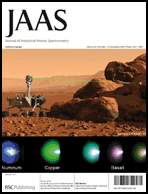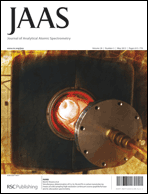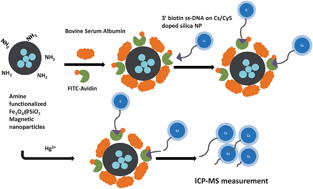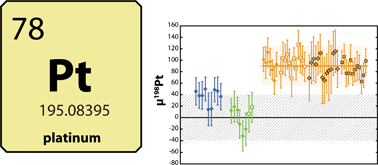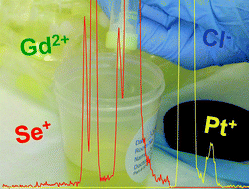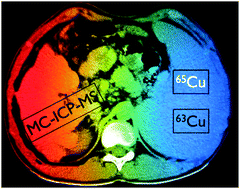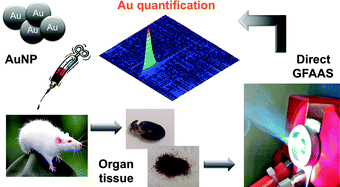This month sees the following articles in JAAS that are in the top ten most accessed:-
Atomic spectrometry update. Environmental analysis
Owen T. Butler, Warren R. L. Cairns, Jennifer M. Cook and Christine M. Davidson
J. Anal. At. Spectrom., 2013,28, 177-216
DOI: 10.1039/C2JA90077G
Atomic spectrometry update—X-ray fluorescence spectrometry
Margaret West, Andrew T. Ellis, Philip J. Potts, Christina Streli, Christine Vanhoof, Dariusz Wegrzynekf and Peter Wobrauschek
J. Anal. At. Spectrom., 2012,27, 1603-1644
DOI: 10.1039/C2JA90045A
Silver nanoparticle characterization using single particle ICP-MS (SP-ICP-MS) and asymmetrical flow field flow fractionation ICP-MS (AF4-ICP-MS)
Denise M. Mitrano, Angela Barber, Anthony Bednar, Paul Westerhoff, Christopher P. Higgins and James F. Ranville
J. Anal. At. Spectrom., 2012,27, 1131-1142
DOI: 10.1039/C2JA30021D
Limitations of the exponential model for the correction for mass discrimination effects during isotope ratio measurements by MC-ICPMS. Demonstration with Sr at 5–15 µL min-1 continuous liquid flow rates
E. Paredes, J. L. Todolib and C. R. Quétel
J. Anal. At. Spectrom., 2013,28, 327-333
DOI: 10.1039/C3JA30210E
Reproducibility of CIGS thin film analysis by laser-induced breakdown spectroscopy
Jung-Hwan In, Chan-Kyu Kim, Seok-Hee Leea and Sungho Jeong
J. Anal. At. Spectrom., 2013,28, 473-481
DOI: 10.1039/C3JA30298A
Atomic spectrometry update. Industrial analysis: metals, chemicals and advanced materials
Simon Carter, Andy S. Fisher, Michael W. Hinds and Steve Lancaster
J. Anal. At. Spectrom., 2012,27, 2003-2053
DOI: 10.1039/C2JA90058K
Determination of prostate-specific antigen (PSA) tagged with TiO2 nanoparticles using ICP-MS
H. K. Choa and H. B. Lim
J. Anal. At. Spectrom., 2013,28, 468-472
DOI: 10.1039/C3JA30299G
Speciation of selenium in cells by HPLC-ICP-MS after (on-chip) magnetic solid phase extraction
Beibei Chen, Bin Hu, Man He, Qian Huang, Yuan Zhanga and Xing Zhang
J. Anal. At. Spectrom., 2013,28, 334-343
DOI: 10.1039/C2JA30280B
Isotope ratio measurements by MC-ICPMS below 10 µL min-1 under continuous sample flow conditions. Exploring the limits with strontium
E. Paredes, D. Goitom Asfahaa and C. R. Quétel
J. Anal. At. Spectrom., 2013,28, 320-326
DOI: 10.1039/C2JA30209H
Accurate determination of S in organic matrices using isotope dilution ICP-MS/MS
Lieve Balcaen, Glenn Woods, Martín Resanoc and Frank Vanhaecke
J. Anal. At. Spectrom., 2013,28, 33-39
DOI: 10.1039/C2JA30265A
Why not take a look at the articles today and blog your thoughts and comments below.
Fancy submitting an article to JAAS? Then why not submit to us today or alternatively email us your suggestions.











